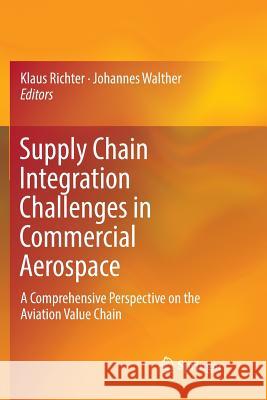Supply Chain Integration Challenges in Commercial Aerospace: A Comprehensive Perspective on the Aviation Value Chain » książka
topmenu
Supply Chain Integration Challenges in Commercial Aerospace: A Comprehensive Perspective on the Aviation Value Chain
ISBN-13: 9783319834542 / Angielski / Miękka / 2018 / 297 str.
Supply Chain Integration Challenges in Commercial Aerospace: A Comprehensive Perspective on the Aviation Value Chain
ISBN-13: 9783319834542 / Angielski / Miękka / 2018 / 297 str.
cena 242,07 zł
(netto: 230,54 VAT: 5%)
Najniższa cena z 30 dni: 231,29 zł
(netto: 230,54 VAT: 5%)
Najniższa cena z 30 dni: 231,29 zł
Termin realizacji zamówienia:
ok. 22 dni roboczych
Bez gwarancji dostawy przed świętami
ok. 22 dni roboczych
Bez gwarancji dostawy przed świętami
Darmowa dostawa!
Kategorie:
Kategorie BISAC:
Wydawca:
Springer
Język:
Angielski
ISBN-13:
9783319834542
Rok wydania:
2018
Wydanie:
Softcover Repri
Ilość stron:
297
Waga:
0.42 kg
Wymiary:
23.39 x 15.6 x 1.63
Oprawa:
Miękka
Wolumenów:
01
Dodatkowe informacje:
Wydanie ilustrowane











